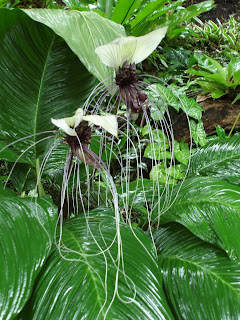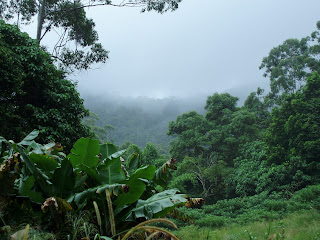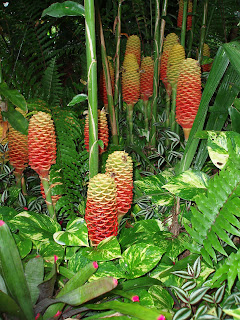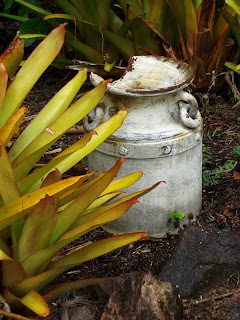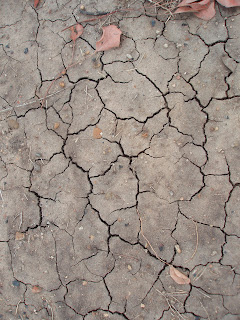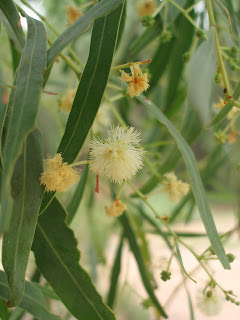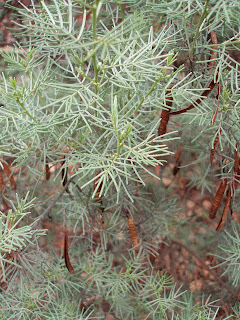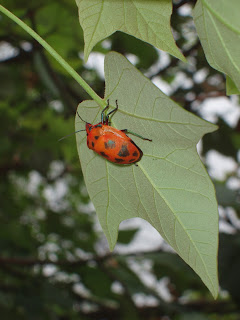The many tender exotic plants which fill the borders of the Exotic Garden spend the fickle winters in a large poly-tunnel. This video, filmed by Chris Ridley, captures its construction back in February 2012. With a bit of ingenuity the new tunnel was constructed over the old, smaller one then fit to burst at the the seams.
Tag Archives: Gardens
Caring for Bromeliads
It has become a tradition at the Exotic Garden that the first plants to be moved to their winter quarters are the Bromeliads on the evening of the last garden open day. This is not to say that they are particularly delicate or tender as in fact they are remarkably durable plants. You can never be sure when the weather will take a turn for the worse and as there are so many tender plants here we have to be prepared. If you only have a few tender plants, keep a close eye on the forecast and if it remains mild leave them be. Its always sad to have to dismantle the garden in its prime but there are too many cherished plants to take any chances. The hundred strong collection of Bromeliads take centre stage adorning the steps to the front door of the house to be admired at every pass. When the time comes for winter preparations to begin this seems as good a place as any to begin.

Bromeliads are a diverse group of plants originating from tropical and sub-tropical regions of the Americas. The most common and ornamental Bromeliads are the rosette forming species capable of holding a reservoir of water in the vase formed by the tightly overlapping leaf bases. In their natural habitat they would be found growing as epiphytes high in the canopy of equatorial tropical forests. Here the roots serve primarily as anchorage, known as hold fast roots, and all the nutrients required by the plant are absorbed from plant and animal detritus which fall into the vase. It doesn’t rain continuously in the rain forests and their lofty location puts them in the searing equatorial sun. As a consequence they are remarkably drought tolerant and its important to bare this in mind when overwintering them in cool temperate gardens.


From May to October the collection of vase or tank forming Bromeliads are displayed outside in full sun. There are many cultivated varieties with striking colour variations and patterns which are intensified by placing in direct sunlight. The collection here are grown in terracotta pots in 100% bark chippings and throughout the summer months they’re watered regularly. Free drainage is important as the rosettes, although filled with water, can easily rot from the base if kept soggy. As low maintenance plants go they rank pretty high though when it comes to winter they certainly aren’t frost hardy. They will however tolerate much lower temperatures than their equatorial origins would suggest. The killer combination when overwintering most tender exotics is the combination of cold and wet together. As each plant is moved to the poly tunnel for the winter its vase is emptied out, any detritus is removed and any brown lower leaves and spent rosettes are cut off. They are placed on the bright side of the poly tunnel and left dry all winter, it couldn’t be easier. The tunnel here is heated to around 7C minimum, however on the coldest nights the temperature has dipped close to zero without incident. During the lengthening days of spring while there’s still a risk of frost but the strengthening sun is heating up the tunnel by day pay close attention to signs of drought stress. The leaves will begin to curl up along their length, loose their glossiness and begin to go brown at the tips. Little by little start refilling their vases until all risk of frost has passed and they can be returned to the garden.


The rosettes of Bromeliads are monocarpic, meaning they only flower once and then die. Often the spent rosettes persist for some time but eventually senesce as nutrients and vigour are diverted to new pups that form at their bases. The fading rosettes can be cut out taking care not to damage the newly emerging pups. Alternatively the new pups can be removed once they are one third the the size of the parent rosette. A sharp knife should should be used to get as close to the stem as possible. Plant these firmly in bark chippings, keep their vases full and place them somewhere bright and warm to establish.

Lyn and Earnie’s Garden
An Aussie Cotage Garden
The Lost Garden of Belli Park
The Botanical Gardens of the Western Woodlands
Now and Then
This will do for now.































